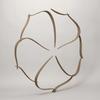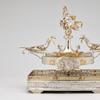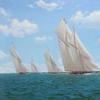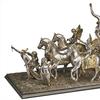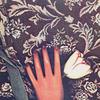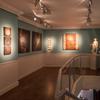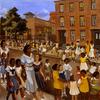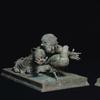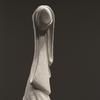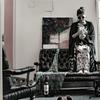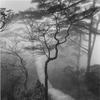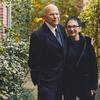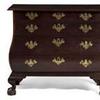Crystal Bridges Museum of American Art debuts new exhibition: Samuel F.B. Morse’s Gallery of the Louvre and the Art of Invention
- BENTONVILLE, Arkansas
- /
- January 04, 2016
Crystal Bridges Museum of American Art announces the opening of Samuel F.B. Morse’s Gallery of the Louvre and the Art of Invention on view January 23 through April 18, 2016 in the Early Twentieth-Century Gallery.
Known today primarily for his role in the development of the electromagnetic telegraph and Morse code, Samuel F. B. Morse began his career as a painter. In 1829, Morse embarked upon a three-year period of study in Paris. This culminated in the monumental painting Gallery of the Louvre, in which the artist chose masterpieces from the Louvre’s collection and depicted them as if they had been exhibited together in one of the museum’s grandest spaces. The work brings together Morse’s artistic and scientific pursuits, revealing an adoration of the old masters as well as the artist’s Calvinist worldview and conservative cultural politics. In total, Morse included 38 of his favorite masterworks in this tightly arranged “salon-style” presentation. Gallery of the Louvre was created between 1831 and 1833 in Paris and New York and is now part of the collection of the Terra Foundation for American Art in Chicago.
“We are pleased to offer our visitors the rare opportunity to see a brilliant artistic experimentation in one of the most significant American paintings of the early nineteenth century,” says Manuela Well-Off-Man, Crystal Bridges curator.
Morse hoped Gallery of the Louvre would offer Americans a fine example for arts education, as well as stimulate art collecting and patronage. Scholars believe that Morse painted himself (at front center) in the role of teacher advising a student. The author James Fennimore Cooper, a friend of Morse, is depicted at left with his wife and daughter.
Morse showed Gallery of the Louvre as a single-painting exhibition only twice—in New York City and New Haven, Connecticut—where it was praised by critics and connoisseurs but failed to capture the imagination of the public. Crushed by the lukewarm public response, Morse soon ceased painting altogether, moving on to his more successful experiments with the electromagnetic telegraph, and, most famously, Morse code. Today, after months of conservation and years of scholarly study, this impressive work of American art reveals Morse’s fascination with the transmission of information: in both his desire to share masterworks from Europe with the American people, and his invention of Morse code.
In addition to the Gallery of the Louvre, the Terra Foundation for American Art is providing the painting, Overview of Francis I, (1831-32) the only known study related to Gallery of the Louvre by Samuel F. B. Morse. The exhibition also features works on loan from the Oklahoma City Museum of Art including William Merritt Chase’s Venice, (1877) and works from Crystal Bridges’ permanent collection including Thomas Cole’s View of Mt. Etna, (1842).
Well-Off-Man adds, “Morse highlighted the techniques and ideals of European masters in Gallery of the Louvre. Like Morse, the other artists featured in this exhibition went on a Grand Tour to Europe to refine their artistic skills.”


